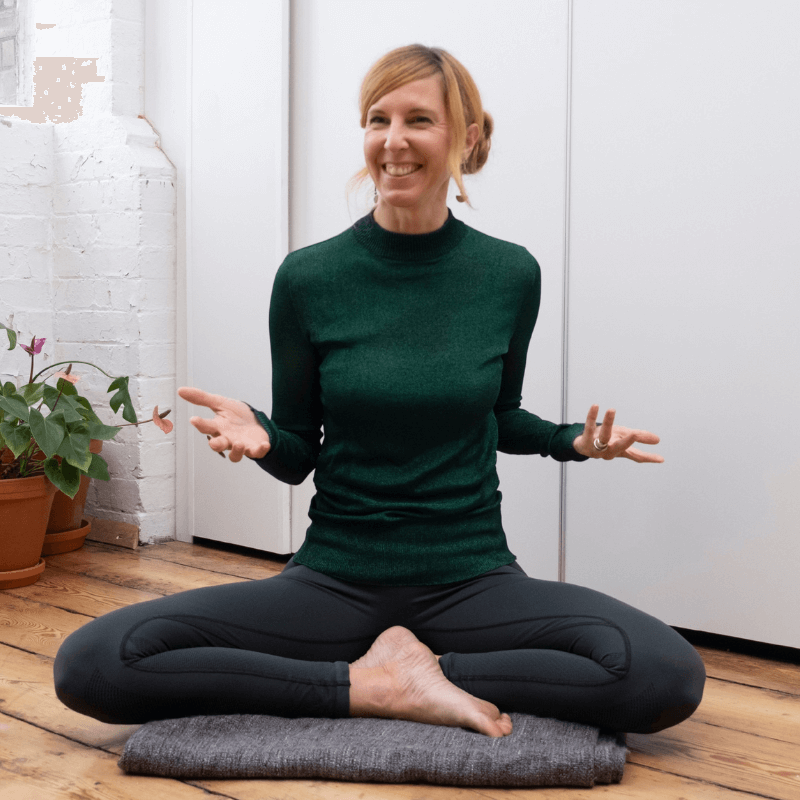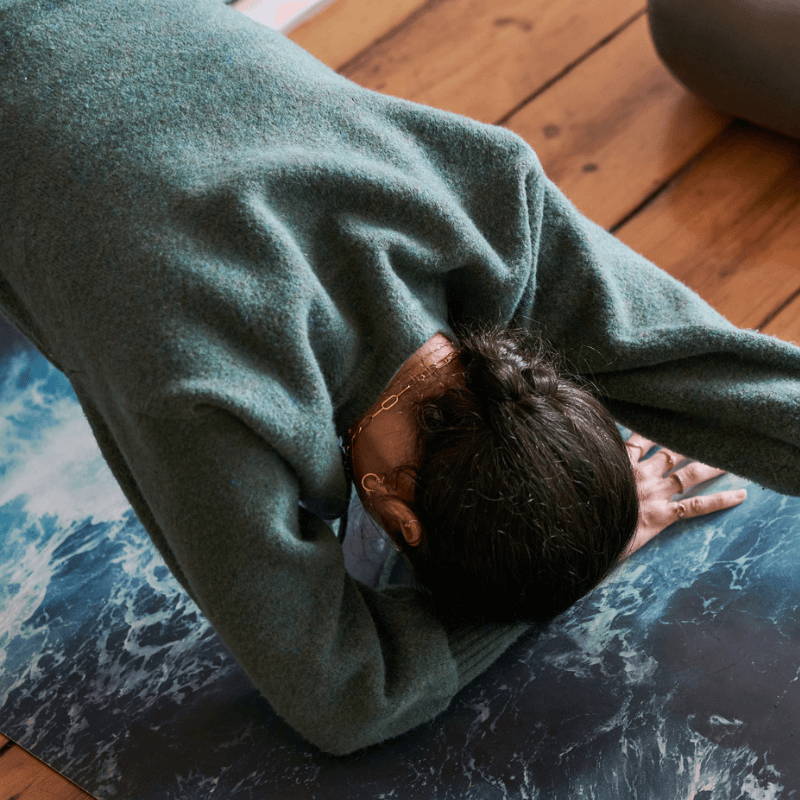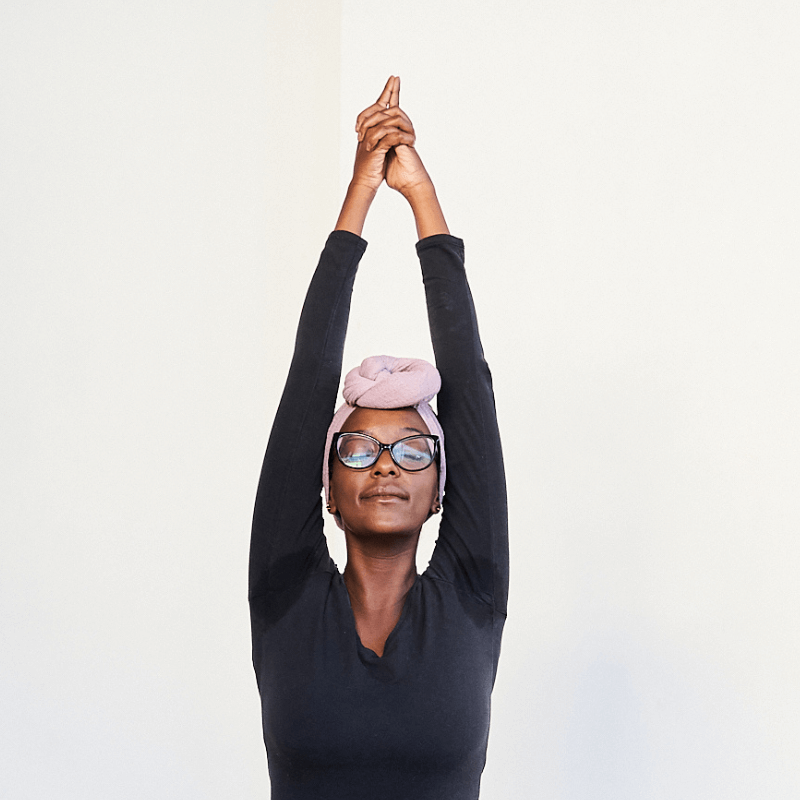Austin Ince, a senior yoga teacher and leader of our Yin Yoga training, has shared three essential yin poses to savour for a short daily yoga practice. For a complete practice, we need more than three but these three alone offer lots, and by sequencing them together, you can create our own simple, beautiful and well-rounded practice.
Butterfly
According to Sarah Powers, “If you can only do one pose, do butterfly!”
Butterfly can be done in a variety of ways. Here are three basic versions, the hips are common to all.
Sitting Butterfly

Folding Butterfly

Resting Butterfly

It’s a symmetrical pose; we only have to do it the once per version, there’s no left- and right-hand sides.
Entering the Pose
From a seated position, bring the soles of the feet together and turn the knees out the side. The feet are a comfortable distance away from the pelvis, the legs form a diamond shape. If you are more mobile in the hips, you may choose to bring the feet in closer to your pelvis. If your spine rounds, you may choose to use a block to prop the pelvis forward. After a few minutes fold forward over the legs for the second version, you can do this gradually over time. Make sure to do this in a passive way, allow the weight of your body to draw you forward. You can support the body using your arms, or with props, like a bolster or blocks. After a few minutes, slowly lift the body up and take your time to lower your back down to the ground, or on to a bolster behind your pelvis to support your spine for the final reclining version. This third version acts as a counter pose to the forward fold.
You can do this sequence from between 9 to 20 minutes, or simply choose one version for 3 to 10 minutes. Anywhere up to 20 minutes is safe as long as you are relaxed and have the time!
Leaving the Pose
Bring your knees together, take the soles of the feet to the floor, roll onto a side of your choice, take your time to move the bolster off your mat and lie down flat on your back to unwind from the pose. Notice how things feel and how the change over a short period of time.
About the Pose
Butterfly is primarily for the hips. The hips are in flexion, externally rotated, abducted and the knees are flexed. If there is a problem with knees you may separate the feet and straighten the knee a little or use a block for support underneath the knee.
When we add the forward fold, we add flexion in the spine.
In the reclining version we add extension in the spine. The position of the arms is personal but if they are out to the sides, in line with the shoulders, a stretch will be added to the top of the chest and to the front of the shoulders too.
In the three different versions of the pose the experience in the hips will be different. This is due to the relationship between the spine and pelvis. Notice the difference by focusing on the sensations you feel in each version. Which one is your favourite and why?
Shoelace
An archetypal pose for the hips and infinitely adaptable!
Shoelace can be done in many ways. Here are three. The hips are common to all versions.
Sitting Shoelace

Lateral Shoelace
Folding Shoelace

It’s an asymmetrical pose, which means whatever we do for one side we repeat to the other.
Entering the Pose
Move into a kneeling position, sitting on the heels with the legs together. Then drop your right hip to the ground by moving to the right off of the backs of the legs to the side. Swing the left leg over the right one, stacking the knees, sit between your heels taking opposite foot to the outside of the opposite hip!
If it’s very easy, bring the feet more forward in line with the knees. If it’s difficult, elevate the pelvis on a block, cross more at the shins rather than the knees, or extend the bottom leg forward.
To move into the lateral version. Reach your left hand out to the side away from your hips. If you’re very flexible, you may be able to bring your forearm to the floor. The important thing is that both of your sit bones remain in contact to the floor. The right one tends to lift when you go to left and vice a versa! You can use a block to lean your forearm or elbow on. In this version you’ll stretch the outer hip on one side a lot more than the other. If you lean to the left, it will be right one and the opposite on the other side! Gentle ease yourself back to the centre and slow fold forward over your legs. Use your arms for support on the tops of the legs. Time of hold: 3 to 5 minutes. If you sequence different versions for the same side, go for 2 to 3 minutes per variation.
Leaving the Pose
Slowly lift the body, take the hands back behind the hips and slowly lower your whole body flat to the ground and enjoy the rebound. You may find that you emit an involuntary groan!
Now repeat for the opposite side.
Hold each of the shoelace variations for a minimum of 2 minutes, to do the whole sequence it should take between 7 to 15 minutes. Alternatively, do one version for 3 to 4 minutes a side.
About the Pose
Shoelace is primarily for the hips, the hips are in flexion, externally rotated, adducted and the knees are flexed. The lateral version adds lateral flexion to the spine. The forward fold adds flexion to the spine.
Twisted Roots
In twisted roots pose, “roots” refers to the bind in the legs.
Twisted Roots
Simple Twist

Twisted roots, as the name suggests, is a twist and, accordingly, an asymmetrical pose. This means we’ll have to repeat it to the oppose side.
Entering the Pose
Enter this pose from lying flat on the back.
Once you are on the back, take the arms out to the sides in line with the shoulders.
Bring the soles of the feet to the floor, then walk the feet and shuffle the back of the pelvis out to the right-hand side. The knees should still be pointing up to the ceiling. Lift your right leg over the left, crossing over the thighs, take the right foot behind the left calf if possible. If not, don’t! (As an alternative, you can do a “Simple Twist” if there is an issue with knees, bring the legs together with bent knees.) Lift the feet up bring the knees over the hips and take your knees out to the left-hand side, rolling onto the outer left hip. To prepare for the other side. Roll the back of the pelvis to ground, unwrap the legs, bring the feet to the ground and square the hips back to the centre. Prepare for the other side by walking the feet and pelvis out to the left as per the previous side. Time of hold 3 to 20 minutes per side, remember to do both sides!
Leaving the Pose
Roll the back of the pelvis to the ground, unwrap the legs, bring the feet to the floor, square up your hips into the centre and give yourself a hug by bringing your knees into your chest. This will aid the release the lower back.
About the Pose
“Twisted Roots” is for the spine, which is in rotation. With the legs in the bind, the hips are flexed, adducted and internally rotated. There aren’t many poses in yoga which internally rotate the hips or adduct them either! This is a key pose for that reason alone. Twists (spinal rotations) are great counter poses to back bends and forward folds. They’re a great way to end a practice before your final relaxation by putting balance into the spine. You can hold them as long as you want anywhere from between 2 to 20 minutes! In my own practice I do this for 15 minutes a side every day, often doing it twice a day!
General Advice for the Practice
Avoid forcing yourself deeper into any pose. That will happen all on its own if you practice with ease. Resolve to stay still once you’re in the pose. If you are too uncomfortable ease out of the pose slightly until it feels okay. Stay in the pose, observe how it feels and if changes allow yourself to slowly deeper over time!
By practicing these three poses, with the variations outlined above and adding a luxurious, leisurely savasana at the end, you’ve got a fabulous 30 minute to an hour’s long practice. Have you only got 5- or 10-minutes spare time? Do Butterfly over a bolster on its own! Put on your favourite music, your comfortable yoga gear and give it a go.
Yin Yoga Training
Interested in learning more about this rejuvenating practice? Join Austin for our Yin Yoga Training starting on the 13th September 2024. Learn about the origins of Yin, philosophy, safe methods of practice, anatomical movement, and TCM meridian theory. This yin yoga training is open to yoga and pilates teachers, as well as interested practitioners.





